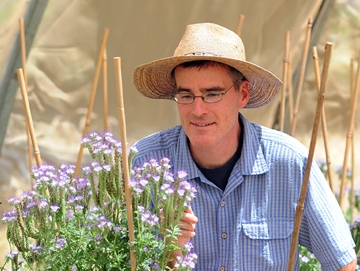
The wild bee research co-authored by 58 bee scientists and published today (June 16) in Nature Communications is drawing a lot of attention--and well it should.
Pointing out that wild bee diversity is declining worldwide at unprecedented rates, the researchers said steps must be taken to conserve them--and not just those that are the main pollinators of agricultural crops.
"This study provides important support for the role of wild bees to crop pollination through a comprehensive global summary,” said co-author and pollination ecologist Neal Williams, associate professor in the UC Davis Department of Entomology and Nematology. “At the same time, we found that in any one region, much of the pollination services from wild bees to a given crop come from just a few species, thus we need to be careful about using a simplistic economic ecosystem-services argument for biodiversity conservation and maintain actions that target biodiversity as specific goal. "
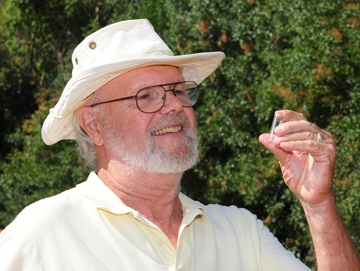
The study, led by David Kleijn of Wageningen University, The Netherlands, found that of the almost 80 percent of crop pollination provided solely by wild bees, only 2 percent are by the most common species. This indicates that the benefits of conserving only economically important organisms are not the same as the benefits of conserving a broad diversity of species, the researchers said.
The paper, “Delivery of Crop Pollination Services is an Insufficient Argument for Wild Pollinator Conservation,” is online at http://www.nature.com/naturecommunications. Among the co-authors are native pollinator specialist Robbin Thorp, distinguished emeritus professor of entomology at UC Davis, and conservation biologist Claire Kremen of UC Berkeley, a longtime associate of the UC Davis Department of Entomology and Nematology.
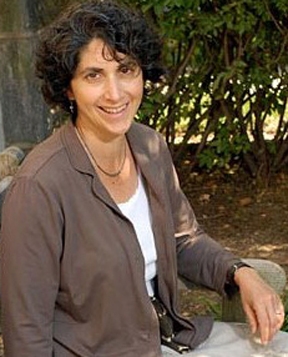
Wrote the researchers in their abstract: “There is compelling evidence that more diverse ecosystems deliver greater benefits to people, and these ecosystem services have become a key argument for biodiversity conservation. However, it is unclear how much biodiversity is needed to deliver ecosystem services in a cost-effective way. Here we show that, while the contribution of wild bees to crop production is significant, service delivery is restricted to a limited subset of all known bee species. Across crops, years and biogeographical regions, crop-visiting wild bee communities are dominated by a small number of common species, and threatened species are rarely observed on crops.”
“Dominant crop pollinators,” they pointed out, “persist under agricultural expansion and many are easily enhanced by simple conservation measures, suggesting that cost-effective management strategies to promote crop pollination should target a different set of species than management strategies to promote threatened bees. Conserving the biological diversity of bees therefore requires more than just ecosystem-service-based arguments.”
The researchers analyzed data from more than 90 studies on five continents, including Europe and North America. They concluded that the higher levels of biodiversity provide greater benefits to the functioning and stability of ecosystems, with some functions also being “economically beneficial” for humans.
Kleijn and his colleagues studied 785 species, analyzing which provide the best economic returns from crop pollination. They found that wild bee communities contribute an average of more than $3,251 per hectare (2.471 acres) to the production of crops, and that they provide the same economic contributions as managed honey bee colonies. However, they also noted that the majority of crop pollination services provided by wild bees are accomplished by only a small subset of the most common species.
“Across the 90 studies, we collected a total of 73,649 individual bees of 785 species visiting crop flowers,” the authors wrote. “Although is an impressive number, it represents only 12.6 percent of the currently known number of species occurring in the states or countries where our studies took place. When we consider only bee species that contribute 5 percent or more to the relative visitation rate of any single study, the percentage drops to 3 percent of the species in the regional species pool. Yet these 2 percent of species account for almost 80 percent of all crop visits.”
These results suggest that conservation efforts targeted directly at a few species providing the majority of ecosystem services, such as crop pollination, would represent a good strategy if the goal is to improve economic returns. However, they said such a strategy is unlikely to be compatible with conserving threatened species and biological diversity “if the goal is to improve the functioning and stability of ecosystems.”
Williams worked with Kleijn and Winfree of Rutgers University New Brunswick, N.J., to conceive of some of the approaches used, particularly suggested looking at the abundance distributions of crop bees within the larger species pools of the region to understand whether the most important crop pollinators species are simply the common bees overall. Williams and Kremen also contributed to the manuscript, from the early drafts to the final versions.
As an aside, we certainly hope that this global research packs a social media wallop and leads to efforts to protect and preserve our wild bees. Unfortunately, many people never think about wild bees. It's "out of sight, out of mind," not "absence makes the heart grow fonder."
We'd all do well to take a look at the amazing macro bee images by Sam Droege, head 'of the bee inventory and monitoring program at the U.S. Geological Survey (USGS). His work has been featured in publications all over the world. Among the latest: National Geographic. See his USGS work posted on Flickr. And check out his book, An Up-Close Look at Pollinators Around the World, co-authored by Laurence Packer.
Absence CAN make the heart grow fonder...
Attached Images:
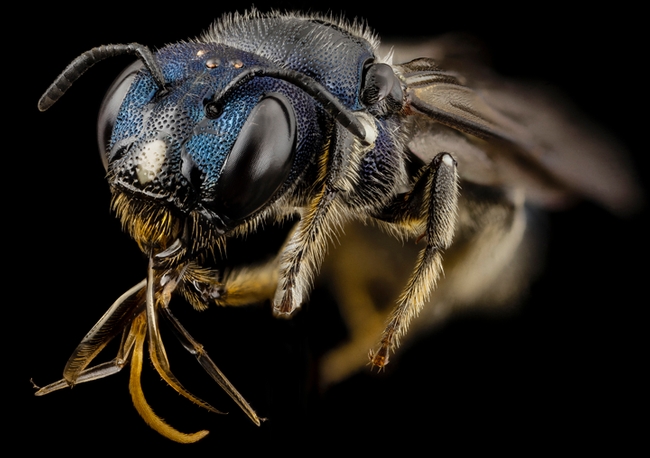
This macro image of a Ceratina bee is the work of Sam Droege of the bee inventory and monitoring program, the U.S. Geological Survey. This image is part of the public domain.
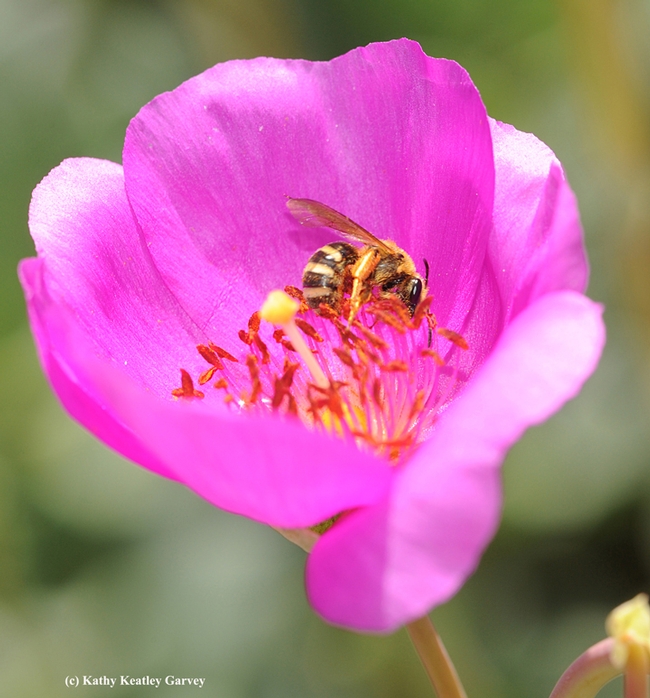
This is a female sweat bee, genus Lasioglossum, on a rock purslane. (Photo by Kathy Keatley Garvey)
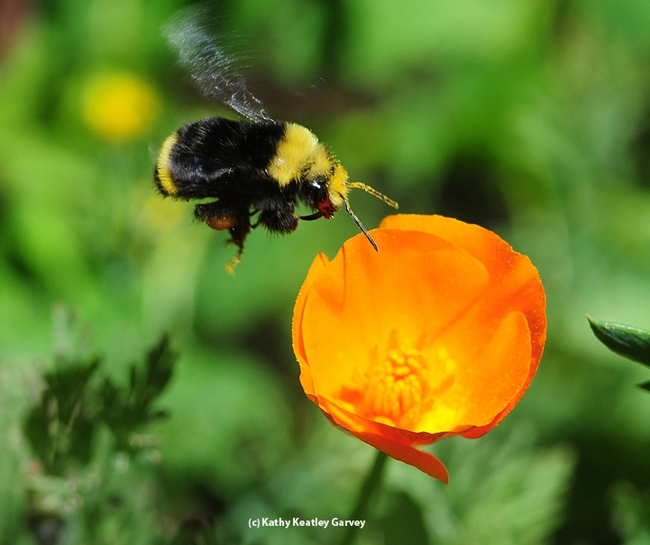
A yellow-faced bumble bee, Bombus vosnesenskii, heads for a California golden poppy. (Photo by Kathy Keatley Garvey)